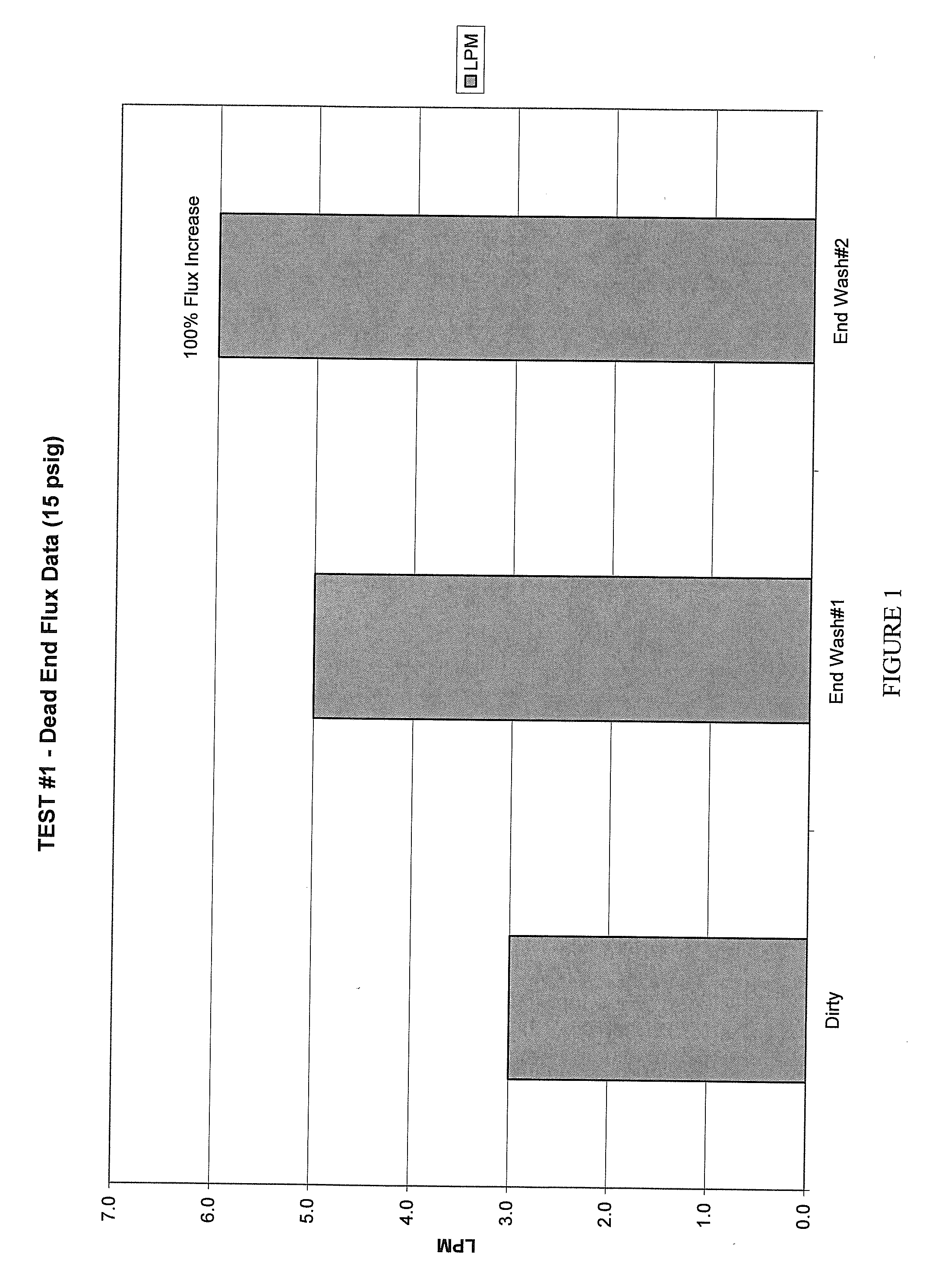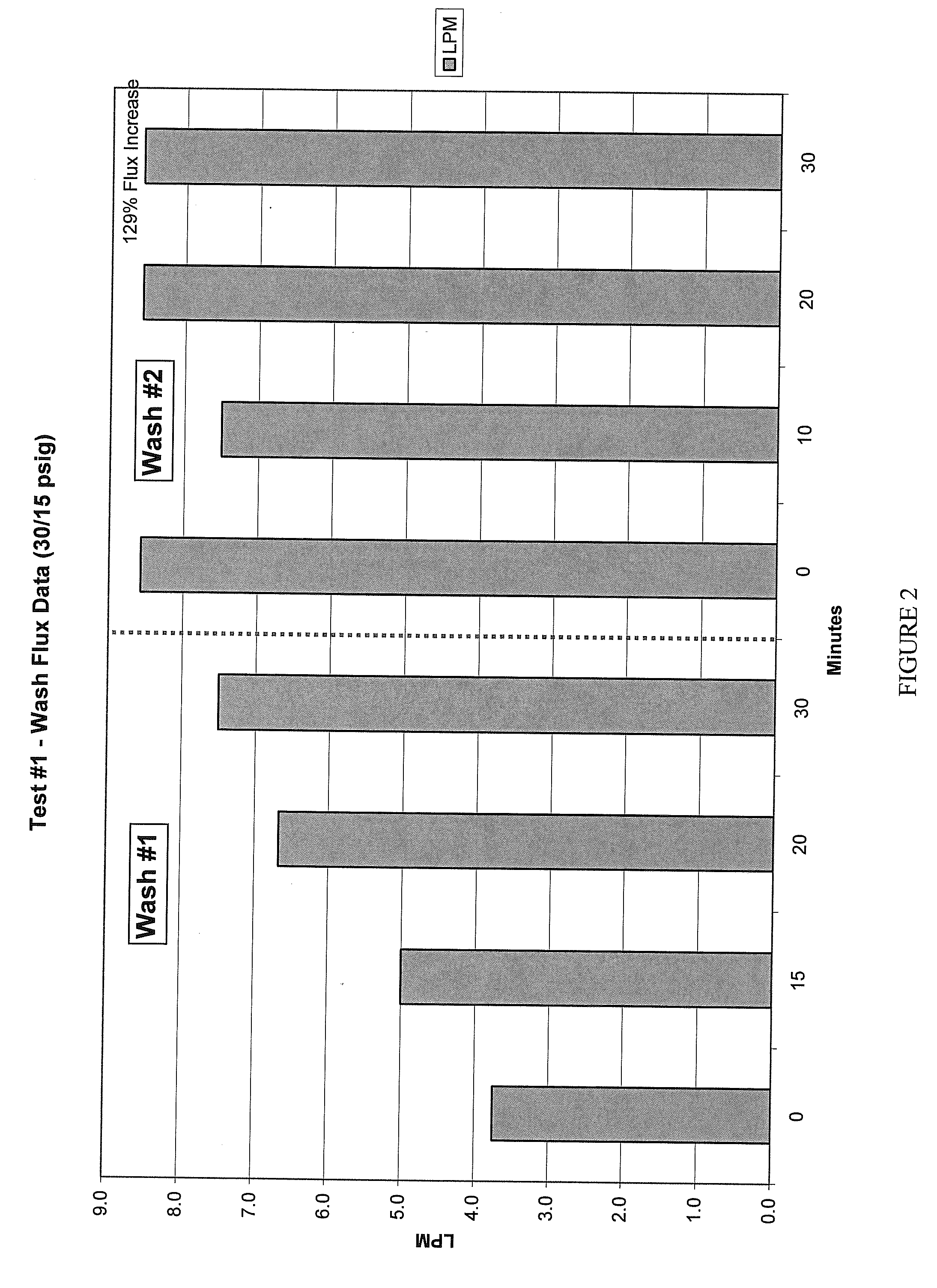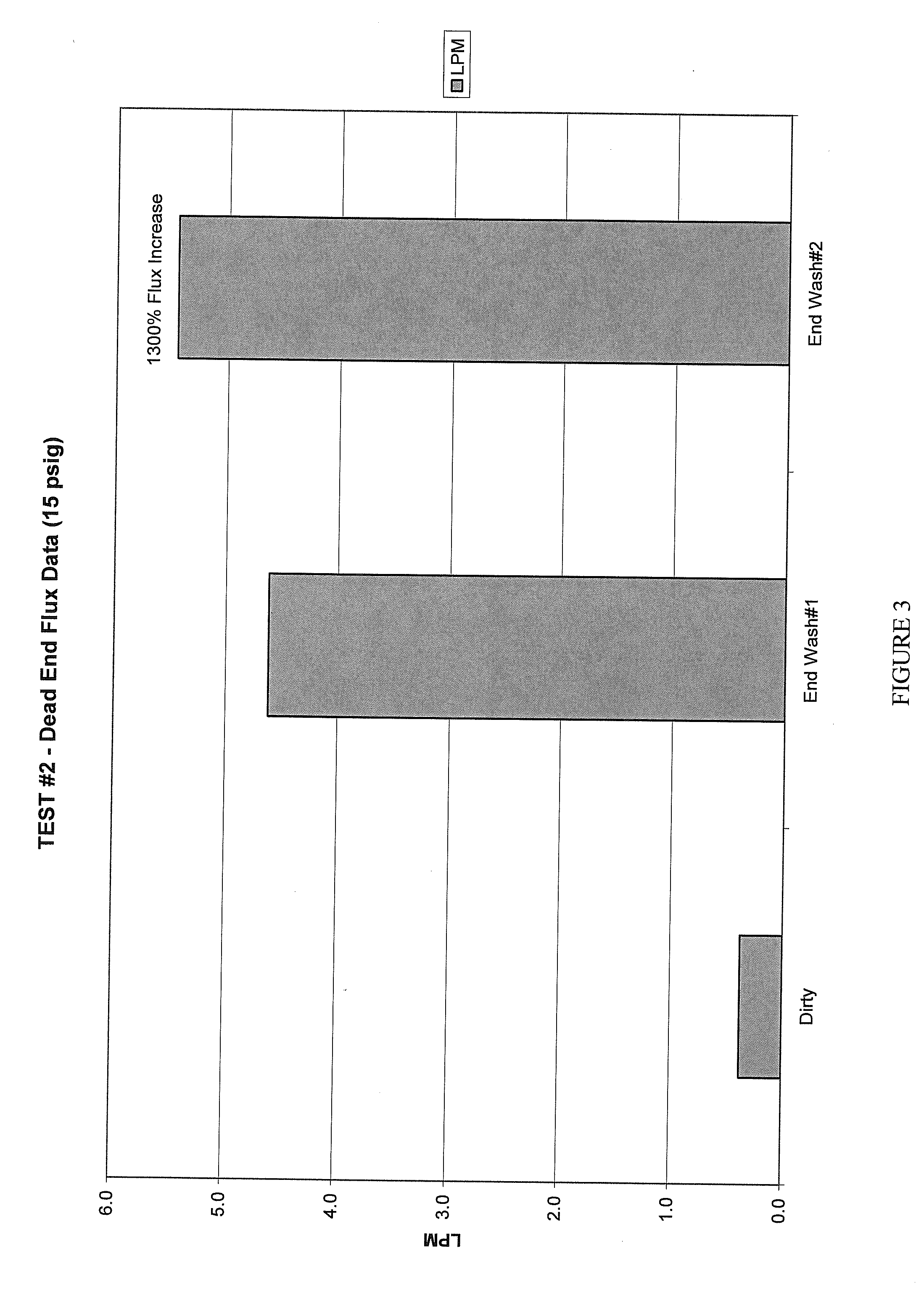Methods for cleaning surfaces with activated oxygen
a technology of activated oxygen and cleaning surfaces, applied in the preparation of detergent mixtures, detergent compositions, detergent compounding agents, etc., can solve the problems of difficult soil removal, difficult to remove soil, and difficult to clean the surface, etc., to achieve the effect of enhancing and facilitating soil removal
- Summary
- Abstract
- Description
- Claims
- Application Information
AI Technical Summary
Benefits of technology
Problems solved by technology
Method used
Image
Examples
example 1
Method for Cleaning a UF Membrane
[0137]The methods of the present invention were evaluated for use in cleaning an ultrafiltration membrane. An acidic active oxygen use solution including about 74% hydrogen peroxide, about 3.5% pelargonic acid, about 3.0% methane sulfonic acid, as well as additional components, e.g., builders, was used for the following tests. An alkaline override use solution including about 97% NaOH (50%) and about 1.4% sodium gluconate (40%) was also used for each of the following tests.
[0138]Test 1
[0139]An ultrafiltration (UF) membrane used to process sweet whey was cleaned. Specifically, a UF membrane made of polysulfone was first treated with 0.5 wt % of the acidic active oxygen use solution described above for about 5 minutes at a pH of about 3.6. 0.2 wt % of the alkaline override use solution described above was then run through the system for about 5 minutes at a pH of about 11.4. 0.4wt % of an activator complex, i.e., KI, was then run through the system for...
example 2
Peroxide Activation at Reduced Temperatures
[0151]A series of different activator complexes were tested within the temperature and pH constraints dictated by membrane tolerance limitations. Polymeric membranes have limited tolerance to temperature and pH. These compatibility limitations prevent the use of temperatures greater than about 130° F., and pH greater than about 11.2 and lower than about 1.8 for cleaning systems.
[0152]The tests described below were run according to the following protocol. Laboratory grade DI water with no additional soils or other cleaning agents other than NaOH and various activator complexes were tested. The use test solutions were heated to 115° F. in a water bath. Individual timers were started once the test chemistry was added to the preheated DI water in each beaker. Active oxygen was measured by standard iodometric titrations of the heated use solutions at various intervals throughout the test period. The active oxygen was plotted against the exact ti...
example 3
Food Soil Removal Test
[0180]The cleaning effects using the methods of the present invention were evaluated using a food soil removal test. 3×3″ square vinyl coupons were used. A food soil including margarine and powdered milk was applied using a paint brush to the rough-textured side of the coupon. 3.0 g of soil was applied, and allowed to dry overnight. All experiments were conducted at room temperature.
[0181]Test1
[0182]Two coupons soiled as described above were submerged in separate beakers with 500 g of a 5.0% acidic active oxygen use solution including an active oxygen source including about 75 wt % H2O2, among other ingredients. Each coupon was allowed to soak for 15 minutes. 7.5 g of KOH (45%) was added to each beaker. To only one beaker, 1.25 g of a 2000 ppm CuSO4 solution was added immediately after addition of the KOH (45%) (effectively adding about 5 ppm CuSO4). The coupons were allowed to soak for an additional 30 minutes.
[0183]The coupons were compared visually against a...
PUM
 Login to View More
Login to View More Abstract
Description
Claims
Application Information
 Login to View More
Login to View More - R&D
- Intellectual Property
- Life Sciences
- Materials
- Tech Scout
- Unparalleled Data Quality
- Higher Quality Content
- 60% Fewer Hallucinations
Browse by: Latest US Patents, China's latest patents, Technical Efficacy Thesaurus, Application Domain, Technology Topic, Popular Technical Reports.
© 2025 PatSnap. All rights reserved.Legal|Privacy policy|Modern Slavery Act Transparency Statement|Sitemap|About US| Contact US: help@patsnap.com



